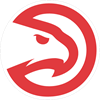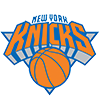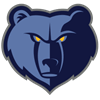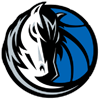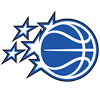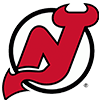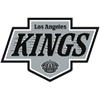Appealing to Authority
I added a handful of projections for Rays players in the last 24 hours, including Wander Franco, but the player I wanted to start with is Michael Wacha. Why would I find a pitcher who finished with a 6.62 ERA and 1.56 WHIP last season, short sample caveats included, all that interesting? Moreover, why would a team that went to the World Series, one that's considered to be one of if not the smartest team in the room, find Wacha all that interesting? If we're drafting Wacha, are we just appealing to authority and trusting the Rays?
Let's look at Wacha's statistical profile to see if we can reveal any clues. There are some positive indicators, but you have to squint to see them. First, despite missing some time on the IL last year due to shoulder inflammation, he retained his average fastball velocity, at 93.6 mph. Alas, he hasn't been getting great results with that fastball — hitters slugged .727 against that four-seamer last season. The culprit could be a spin rate that placed him in the 15th percentile last year. Might the Rays be able to unlock more spin on his fastball, cutter and changeup? Will they alter his pitch-mix and optimize his offerings? Wait, I'm already starting to appeal to authority by counting on that improvement!
OK, Wacha also cut his BB% from 9.6 down to 4.5, putting him among the league's elite strike-throwers, while also increasing his K% from 18.5 to
Appealing to Authority
I added a handful of projections for Rays players in the last 24 hours, including Wander Franco, but the player I wanted to start with is Michael Wacha. Why would I find a pitcher who finished with a 6.62 ERA and 1.56 WHIP last season, short sample caveats included, all that interesting? Moreover, why would a team that went to the World Series, one that's considered to be one of if not the smartest team in the room, find Wacha all that interesting? If we're drafting Wacha, are we just appealing to authority and trusting the Rays?
Let's look at Wacha's statistical profile to see if we can reveal any clues. There are some positive indicators, but you have to squint to see them. First, despite missing some time on the IL last year due to shoulder inflammation, he retained his average fastball velocity, at 93.6 mph. Alas, he hasn't been getting great results with that fastball — hitters slugged .727 against that four-seamer last season. The culprit could be a spin rate that placed him in the 15th percentile last year. Might the Rays be able to unlock more spin on his fastball, cutter and changeup? Will they alter his pitch-mix and optimize his offerings? Wait, I'm already starting to appeal to authority by counting on that improvement!
OK, Wacha also cut his BB% from 9.6 down to 4.5, putting him among the league's elite strike-throwers, while also increasing his K% from 18.5 to 23.7. Improvement is great! We like to see it! Alas, that K% remains about league-average (52nd percentile) despite the improvement.
Wacha's FB% also increased from 29.9 up to a whopping 41.1, and he gave up homers on 20.5 percent of his flyballs. That seems (a) sub-optimal and (b) unlikely to repeat — though he gave up homers at a similar rate in 2019 with the Cardinals. Citi Field actually played as a homer-friendly park in 2020, considerably better than his ballpark in Tampa Bay. I assume Citi Field's index isn't only attributable to Wacha and Steven Matz, but then again, it was only 30 home games. The Rays also have elite defenders in the outfield on many occasions, something that's important when you're a flyball pitcher; the Mets did not have elite outfield defense last year.
Despite all that, I remain fairly nonplussed with the acquisition. His upside is as a league-average innings-eater, someone who helps the Rays buy time until Luis Patino, Brendan McKay, Brent Honeywell and Shane McClanahan, or some combination of them and others, are ready to contribute more. I know I could be underestimating the Rays' magic between their defense and their coaching staff, notably pitching coach Kyle Snyder, but Wacha remains just a late-round dart-throw for me. I'd consider him in AL-only leagues like Tout Wars (but not in LABR's AL-only league if I were to play there again, because LABR doesn't allow for shuttling a player from active to reserve or vice versa, absent an injury), or in a Draft Champions type of format. Expecting anything more from Wacha is all about investing in the Rays and hoping they have another trick up their sleeve.
The Francisco Lindor Trade
When Francisco Lindor was traded to the Mets on Thursday, it didn't come as a surprise. Indians fans knew a trade was coming — the team essentially said so, much like the Rays did with Blake Snell. Moreover, the Mets announced their intent to be a buyer once new owner Steve Cohen assumed control of the team, so Lindor's destination wasn't a surprise. But I imagine it still really hurts if you're a Cleveland fan, especially with the knowledge that Carlos Carrasco was included in the deal, making it apparent that this was a total payroll dump. Cleveland now has a projected payroll of $40 million for the 2021 season, down from $86 million (projected — not the pro-rated final result) at the end of the 2020 season. Keep in mind they cut Brad Hand at the beginning of the offseason, rather than be on the hook for $10 million for 2021.
I won't belabor the point too much, but spare me the cries for a salary cap, and the notion that poor little Cleveland can't afford the current system. Just on the TV deals alone, they will make $105 million in 2021:
So I'm reading @Ken_Rosenthal on the reduced national TV deals and I'm still seeing $58m a year from national deals (not counting streaming deals) and the Indians get $47m a year from their local deal and they have a $40m payroll. Sweet. https://t.co/Dvah04rYLd
— Eno Sarris (@enosarris) January 8, 2021
The owners have never been forthcoming about their revenues and expenses — certainly not with the transparency of the NBA, among other organizations. I have no doubt that they lost money in 2020, but I'm skeptical to the extent of their claims, not to mention their discounting of profits in previous years.
I think that the actions by many of the teams this offseason portend a darker future for the labor status of the sport. The Collective Bargaining Agreement between the players and the owners expires after the 2021 season, and both sides are already jockeying for a better deal for the next CBA. Moreover, the teams are laying off other personnel, and drastically cutting the size of the minor leagues. This is going to make last summer look like a gentle disagreement.
As with nearly every deal when a star player gets sent away, the general reaction that I see becomes "... is that it?" And that's pretty much been the reaction to this trade. The Mets didn't trade their top prospect, Ronny Mauricio, nor did they trade any of the staples in their lineup — both Amed Rosario and Andres Gimenez would have been ticketed for the bench upon the arrival of Lindor, so they'll both be better off in terms of playing time in Cleveland.
Speaking of Rosario, expectations were very high on him going into 2020, but he had a disaster season, both at the plate and in the field. At the plate, Rosario hit just .252/.272/.371 with four walks against 34 strikeouts, and didn't steal a base in just one attempt. What happened with the lack of stolen bases? His sprint speed, at 28.7 ft/s, did represent a small decline, but it was still in the 92nd percentile last year. That shouldn't preclude stolen-base attempts. I suppose the answer is that it's hard to get stolen-base opportunities when a player has a .272 OBP, and has the vast majority of his plate appearances in the bottom three spots in the order. Perhaps the change of scenery will help, though it's worth noting that the player he replaces, Cesar Hernandez, also had a mysterious drop in stolen-base attempts in 2020.
You'll note that Rosario is ticketed for second base. That's because his defense also suffered in 2020, and Andres Gimenez, who is going to Cleveland along with him, was superior with the glove. Gimenez has limited power upside, but makes decent contact, has some stolen-base potential and has a strong defensive reputation. Could there be a power upside still? Gimenez turns 23 in September, so it's possible that his power isn't yet fully formed. The market so far is buying Gimenez a lot more than Rosario — Gimenez has a 196 ADP, Rosario 343.
With Carrasco also in the deal, two former Padres, Cal Quantrill and Logan Allen, likely will battle it out for the fifth starter's job in Cleveland. I've always had a soft spot for Quantrill — too soft, alas, as I left him active in my lineup toward the end of 2019 for a couple bad starts against the Dodgers. He's done a good job of suppressing hard contact in his career, and if the Indians can help him get more mileage out of his fastball, perhaps inducing more spin, they might have themselves a sleeper.
Finally, I think Luis Guillorme benefits in this trade with the Mets, with both Gimenez and Rosario going away. Guillorme can hit for average and sprinkle in a few stolen bases. He only qualifies at second base for now, but he's capable of playing every infield slot, and thus might get some extra time at third base should the Mets slot J.D. Davis there, perhaps in the course of making some offense/defense swaps.
Projections Added
Wander Franco, SS, TB - I have no reason to doubt Franco as a prospect, but I suspect that he might be going too soon in stand-alone leagues this year. His current ADP is 252. He didn't have a minor league season last year, so it's hard to know exactly what he did in the alternate training site and on the playoffs taxi squad. Making matters more complicated, he had to shut it down in winter ball with biceps inflammation and shoulder soreness. Moreover, Willy Adames had a good season at shortstop and is excellent defensively. We might see Franco debut at a position other than shortstop, and have it come later than we might expect.
Mike Brosseau, 1B/3B/2B, TB - Brosseau did more than get his sweet, sweet revenge against Aroldis Chapman in the playoffs. He's the perfect Rays find — undrafted out of college, plays three positions, and then mashes lefties while being used optimally by manager Kevin Cash. The last three seasons, he has a .939 OPS against southpaws. Alas, unless you're in a Strat-o-matic or other type of simulated games format, he's not as optimal for fantasy, given the lack of regular playing time.
Francisco Mejia, C, TB - Mejia is coming off an awful 2020 season, and his status has fallen precipitously since he was an elite catching prospect with the Indians. Often when a catcher is moved out from behind the plate, his hitting takes off, but that didn't happen with Mejia. Sometimes catchers can be late bloomers, though, and the Rays already hit pay dirt once with Travis d'Arnaud in a similar situation, so I'm sure there will be someone in nearly every draft willing to take a chance on him. It might even be me.
Michael Wacha, SP, TB - See above.
John Curtiss, RP, TB - The Rays keep finding bullpen reclamation projects seemingly out of thin air. Curtiss occasionally works as an opener, which actually hurts his value for our purposes, because he's highly unlikely to stick around long enough for a win. But if he gets stretched out further or his role changes, he could be a sneaky value — I loved his 25:3 K:BB last year.
Shane McClanahan, SP, TB - McClanahan made his major league debut in the playoffs against the Yankees in Game 1 of the ALDS, mopping up in a blowout loss. But he was the 31st overall pick in the 2018 draft and came on strong in 2019. He's a hard-throwing lefty who could come on strong this year. He probably won't begin the season with the team, but I could see him making an impact in the second half.
Brent Honeywell, SP, TB - Honeywell hasn't thrown a competitive pitch since 2017 because of a torn UCL in his pitching elbow, a fractured elbow in 2019 and then nerve decompression surgery last year. It's possible he never makes it, but he was an elite prospect before the various injuries. If I knew how to express a shrug emoji numerically, it would be Honeywell's projection.
Next Up: Andrew Vaughn, Adley Rutschman








